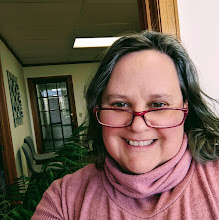Image by M. Gustafson Gervasi, 2013
Sick days are in our future, putting both mom and dad on to plan B for the day. Sure, it hasn't happened yet, but it will, and I'm planning for it. And I do the same with my clients. That is what estate planning is, at least to me. It is not something reserved for the upper crust of society. One does not need a second home to require an estate plan. One only need to be age 18 or older. Why? Estate planning is planning for illness, death and taxes. Things none of us will escape. And without the proper papers in place courts will make decisions, and those may not mirror ones you would have made. Without a plan, what will happen? Something will, but will that something be ideal, optimal, just? Take control and put your wishes on paper, that's an estate plan.
And it means facing the worst. Sure you want everything to go to your spouse or partner. But what if they don't survive you. Car accidents can claim more than one life. Then on to your children, but what if they were in the car? We are getting into the land of statistically improbable, but these can and do happen. Planning for the worst.....it's not fun, but at least you are prepared.
I'll leave you with a few action steps to get the process started:
- Determine what if any estate planning paperwork you might have in place:
- beneficiary forms on life insurance or retirement
- PODs or TODs on banking and or brokerage accounts
- will
- multiple names on deeds to real estate
- Create forms that you are missing
- Review the papers and see if they reflect your current wishes -- remember, what is listed on a beneficiary form controls. If an ex is listed, guess who will receive the funds? Yes, most likely the ex!
- Make change as needed -- look at names, has someone died or been born and it is not reflected?
- Create a 3-ring binder with subject dividers to organize things. This will help you in years ahead when you need to make updates, or the papers are put to use.


1 comment:
Post a Comment